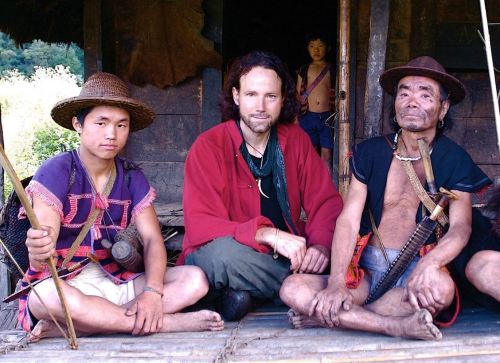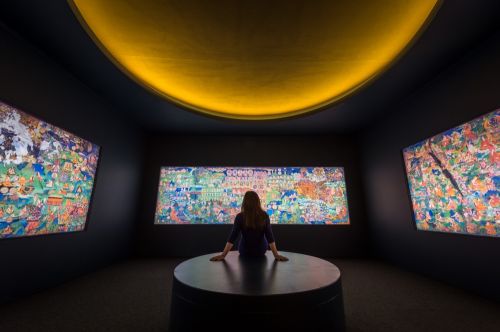Ian Baker fell in love with the mountains as a boy, learning to climb when he could barely walk. As a young student he visited Tibet and never left. Back in the West, he’s recently co-curated an exhibition at Wellcome Collection which showcases the tantric gems hidden within Tibet’s secret temples. Bringing together mural images and objects retrieved from what was once the Dalai Lama's private meditation chamber and beyond, it’s provides dazzling insight into ancient esoteric practices with surprising relevance to modern life. I called him to talk about treasure hunts and how it feels to lock oneself in a cave for weeks on end.

I read that even senior monks weren’t granted access to the Lukhang. How did you get in?
The reality is that during the great cultural revolution in China, which of course encompassed Tibet, all temples and monasteries were completely sealed for the better part of more than a decade. Any spiritual or religious life was partially suppressed, but in the early 1980’s the temples that had survived reopened. The Lukhang was among those, and had been largely forgotten when I visited in 1985. There was a little bridge that went across to it and it felt like stumbling across a treasure. It had these incredible murals on the top floor that somehow survived.
The murals have been restored and are the climax of the exhibition...
They’re absolutely extraordinary. They’ve been transformed quite literally from wall paintings into twenty-first century versions of stained glass windows. We see them as light boxes, but they look like stained glass. Stained glass has an importance within sacred spaces throughout Europe, but this is something almost futuristic. An incredible repository of teachings is represented in this completely illuminated and modern way. The 120 objects that precede it contextualise the practices presented in the murals themselves.
There are some items on display which are quite dark in nature, like the sharp implements used to cut out the ego. I’d normally associate these with mortification - do they challenge fundamental Buddhist principles?
It’s a good question. You’ll see aprons made of human bones and upturned skull cups filled with wine at the exhibition, but these have nothing to do with mortification. With tantric buddhism, you go into the darkness and torture of the mind to bring about a fuller response to human life. For example, In early Buddhism, people meditated on top of corpses to recognise impermanence, and when the time of death came at high altitudes, bodies were cut up and fed to vultures on the top of hills. It was considered important that children come to these events at one point in their childhood, to confront mortality.
 The exhibition explores the concept of hidden lands. How would you describe them to readers who may be unfamiliar with the concept?
The exhibition explores the concept of hidden lands. How would you describe them to readers who may be unfamiliar with the concept?
We’ve inherited this concept of Shangri-La, a completely fictional creation from James Hilton, who in 1933 created this vision of an earthly paradise hidden in some remote part of the Himalayas. He was drawing on an ancient tradition that has existed in Tibet since the 8th century. The theory is that when you were somehow fortunate enough to find your way into such a place, ageing was somehow suspended. There were magical plants, sustenance, an idyllic climate.... All human civilisations look at the world and aim to find a place in which our vision of paradise can be manifested.
While you were on your search for the hidden lands, you meditated in caves for weeks on end. What was that like?
It was a challenge given to me by a senior Tibetan lama. He asked me, point-blank: ‘Can you spend a month alone?’. I went, and continued every summer after that.
I learnt that our happiness, our contentedness; all of those things we spent our lives trying to secure, are really not based on external circumstances. There’s a sense that erupts within that experience of very intentional solitude that isn’t there until you’ve come across it. Hidden lands are self-secrets, in a sense; they’re never truly hidden from the world, just from view.
Tibet’s Secret Temple, Curated by Ian Baker and Ruth Garde and featuring mural images by Thomas Laird, is running at Wellcome Collection until 28 February 2016. Visit wellcomecollection.org/secrettemple for more information. Images: The Wellcome Collection, Ian Baker

